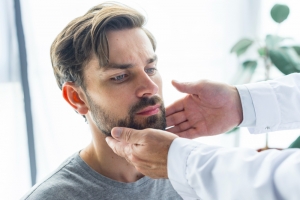Testosterone deficiency syndrome (TDS), also known as hypogonadism, is a condition characterized by low levels of testosterone in the body. While often associated with aging, TDS can affect men of all ages and has profound effects on physical, mental, and emotional well-being. Living with TDS is a complex journey that involves navigating various symptoms and challenges. In this blog, we'll delve into what it's like to live with TDS, exploring its impact on daily life, relationships, and overall health.
The Physical Toll: Fatigue, Low Libido, and More
One of the most significant aspects of living with TDS is the physical toll it takes on the body. Fatigue, lethargy, and a general lack of energy are common symptoms experienced by men with TDS. Simple tasks that were once effortless may become daunting challenges, impacting productivity and quality of life. Additionally, low libido and sexual dysfunction are prevalent among those with TDS, affecting not only intimate relationships but also self-esteem and confidence.
Navigating Emotional Rollercoasters
Beyond the physical symptoms, TDS can also manifest in emotional and psychological ways. Mood swings, irritability, and depression are frequently reported by individuals living with TDS. These fluctuations in mood can strain relationships with loved ones and make it difficult to maintain a positive outlook on life. Coping with these emotional rollercoasters requires patience, understanding, and sometimes professional support.
The Frustration of Misdiagnosis and Stigma
One of the most frustrating aspects of living with TDS is the journey to diagnosis. Many men endure years of symptoms before receiving a proper diagnosis, often due to a lack of awareness or understanding of the condition. Furthermore, there can be stigma surrounding TDS, with some dismissing it as a natural part of aging or attributing symptoms to other causes. Overcoming these barriers to diagnosis and treatment is essential for effectively managing TDS and improving quality of life.
Treatment Options: Finding What Works
Fortunately, there are treatment options available for TDS that can help alleviate symptoms and improve overall well-being. Testosterone replacement therapy (TRT) is one such option, involving the administration of synthetic testosterone to raise levels in the body. However, finding the right treatment approach can be a trial-and-error process, as what works for one individual may not work for another. TRT treatment requires close collaboration with healthcare providers to tailor the approach to each individual's needs and monitor its effectiveness over time. It's essential for those living with TDS to work closely with healthcare providers to explore treatment options and find what works best for them.
Managing Expectations and Adjusting to Changes
While treatment can help alleviate some symptoms of TDS, it's essential to manage expectations and understand that it may not be a cure-all. Adjusting to life with TDS often involves making lifestyle changes, such as adopting a healthier diet, incorporating regular exercise, and prioritizing adequate sleep. Additionally, seeking support from friends, family, or support groups can be invaluable in navigating the challenges of living with TDS.
Looking to the Future: Hope and Resilience
Living with TDS can be challenging, but it's essential to remember that there is hope for a brighter future. With proper diagnosis, treatment, and support, individuals with TDS can regain control of their lives and rediscover a sense of vitality and well-being. By raising awareness about TDS and advocating for better understanding and access to care, we can empower those living with the condition to live their best lives.
Exploring the Impact on Relationships and Intimacy
One area profoundly affected by testosterone deficiency syndrome is relationships, particularly intimate ones. Low libido and sexual dysfunction can strain partnerships, leading to feelings of frustration, inadequacy, and distance between partners. Open communication, patience, and understanding are crucial for navigating these challenges and maintaining healthy relationships. Couples may need to explore alternative forms of intimacy and find ways to connect emotionally when physical intimacy is compromised. Seeking counseling or therapy together can also be beneficial in addressing relationship issues and strengthening bonds.
Conclusion: Embracing Life with TDS
Living with testosterone deficiency syndrome is a multi-faceted journey that involves navigating physical, emotional, and psychological challenges. From managing symptoms to finding the right treatment approach, individuals with TDS face unique obstacles on their path to wellness. However, with perseverance, support, and a positive outlook, it's possible to embrace life with TDS and thrive despite its challenges. By sharing our stories, raising awareness, and advocating for better care, we can create a brighter future for all those living with TDS.






